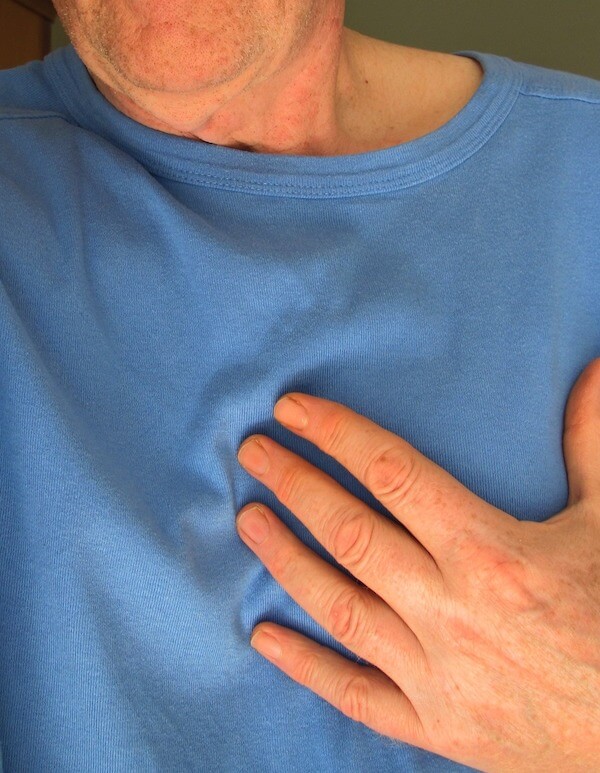Blog

Any activity is better for your heart than sitting
The study, supported by the British Heart Foundation (BHF) and published in the European Heart Journal, is the first to assess how different movement patterns throughout the 24-hour day are linked to heart health. It is the first evidence to emerge from the international Prospective Physical Activity, Sitting and Sleep (ProPASS) consortium.
Cardiovascular disease, which refers to all diseases of the heart and circulation, is the number one cause of mortality globally. In 2021, it was responsible for one in three deaths (20.5m), with coronary heart disease alone the single biggest killer. Since 1997, the number of people living with cardiovascular disease across the world has doubled and is projected to rise further.
In this study, researchers at UCL analysed data from six studies, encompassing 15,246 people from five countries, to see how movement behaviour across the day is associated with heart health, as measured by six common indicators. Each participant used a wearable device on their thigh to measure their activity throughout the 24-hour day and had their heart health measured.
The researchers identified a hierarchy of behaviours that make up a typical 24-hour day, with time spent doing moderate-vigorous activity providing the most benefit to heart health, followed by light activity, standing and sleeping compared with the adverse impact of sedentary behaviour.
The team modelled what would happen if an individual changed various amounts of one behaviour for another each day for a week, in order to estimate the effect on heart health for each scenario. When replacing sedentary behaviour, as little as five minutes of moderate-vigorous activity had a noticeable effect on heart health.
For a 54-year-old woman with an average BMI of 26.5, for example, a 30-minute change translated into a 0.64 decrease in BMI, which is a difference of 2.4%. Replacing 30 minutes of daily sitting or lying time with moderate or vigorous exercise could also translate into a 2.5 cm (2.7%) decrease in waist circumference or a 1.33 mmol/mol (3.6%) decrease in glycated haemoglobin.
Dr Jo Blodgett, first author of the study from UCL Surgery & Interventional Science and the Institute of Sport, Exercise & Health, said: “The big takeaway from our research is that while small changes to how you move can have a positive effect on heart health, intensity of movement matters. The most beneficial change we observed was replacing sitting with moderate to vigorous activity – which could be a run, a brisk walk, or stair climbing – basically any activity that raises your heart rate and makes you breathe faster, even for a minute or two.”
The researchers pointed out that although time spent doing vigorous activity was the quickest way to improve heart health, there are ways to benefit for people of all abilities – it’s just that the lower the intensity of the activity, the longer the time is required to start having a tangible benefit. Using a standing desk for a few hours a day instead of a sitting desk, for example, is a change over a relatively large amount of time but is also one that could be integrated into a working routine fairly easily as it does not require any time commitment.
Those who are least active were also found to gain the greatest benefit from changing from sedentary behaviours to more active ones.
Professor Emmanuel Stamatakis, joint senior author of the study from the Charles Perkins Centre and Faculty of Medicine and Health at the University of Sydney, said: “A key novelty of the ProPASS consortium is the use of wearable devices that better differentiate between types of physical activity and posture, allowing us to estimate the health effects of even subtle variations with greater precision.”
Though the findings cannot infer causality between movement behaviours and cardiovascular outcomes, they contribute to a growing body of evidence linking moderate to vigorous physical activity over 24 hours with improved body fat metrics. Further long-term studies will be crucial to better understanding the associations between movement and cardiovascular outcomes.
Professor Mark Hamer, joint senior author of the study from UCL Surgery & Interventional Science and the Institute of Sport, Exercise & Health, said: “Though it may come as no surprise that becoming more active is beneficial for heart health, what’s new in this study is considering a range of behaviours across the whole 24-hour day. This approach will allow us to ultimately provide personalised recommendations to get people more active in ways that are appropriate for them.”
James Leiper, Associate Medical Director at the British Heart Foundation, said: “We already know that exercise can have real benefits for your cardiovascular health and this encouraging research shows that small adjustments to your daily routine could lower your chances of having a heart attack or stroke. This study shows that replacing even a few minutes of sitting with a few minutes of moderate activity can improve your BMI, cholesterol, waist size, and have many more physical benefits.
“Getting active isn’t always easy, and it’s important to make changes that you can stick to in the long-term and that you enjoy – anything that gets your heart rate up can help. Incorporating ‘activity snacks’ such as walking while taking phone calls, or setting an alarm to get up and do some star jumps every hour is a great way to start building activity into your day, to get you in the habit of living a healthy, active lifestyle.”
This research was funded by the British Heart Foundation.
Source: University College London
ImageCredits: Image by Gerd Altmann from Pixabay

